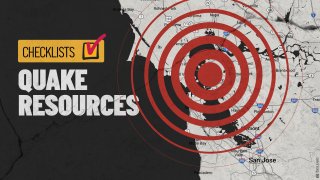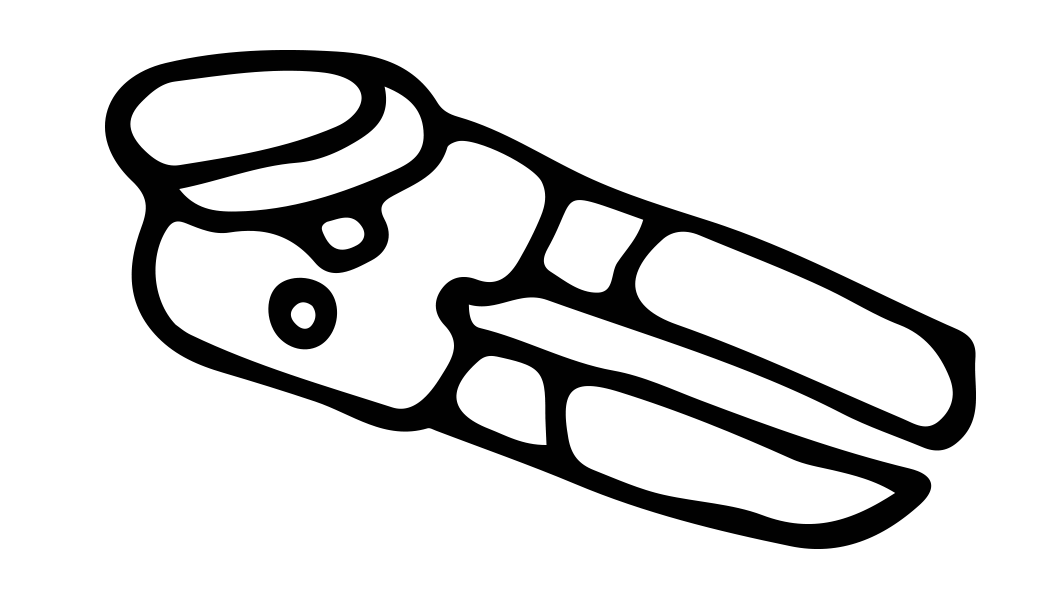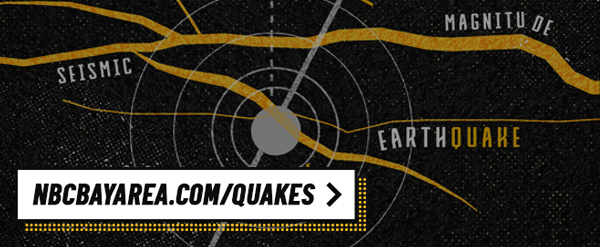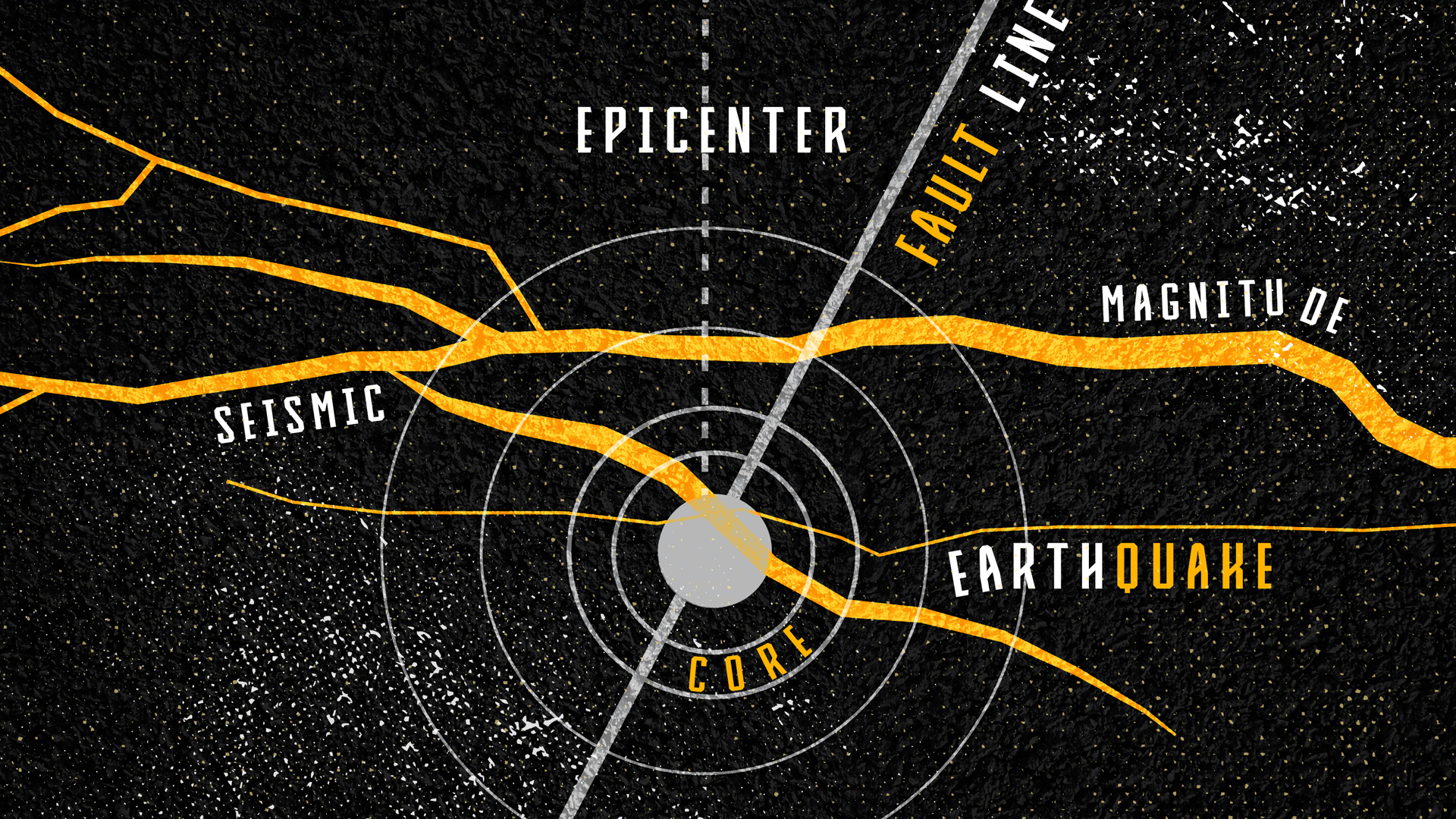
Once a major earthquake strikes and disrupts infrastructure, access to food, water, electricity and other vital systems might be limited for several days. Not sure if you have enough to be ready for an emergency? Here's a checklist you can use, built from a wealth of resources and past reports, to help you prepare for your food and water needs during a disaster:
QUICK VIEW
- Stock as much water as you can (at least 1 gallon of water per day for each person and each pet)
- Stock emergency food (plan to have at least a 3-day supply)
- Remember any special needs
- Keep a manual can opener and disposable utensils
- Store familar foods too
- Keep refrigerator and freezer doors closed as much as possible during power outages
- Know how to turn off your home's water supply
- Use water, food and medications before they go bad and replace with fresh supplies
- When in doubt, throw it out!
- Maximize your food supply

STOCK AS MUCH WATER AS YOU CAN
Having ample clean water and staying hydrated is a top priority in an emergency. Build a supply of water that will meet your family's needs for several days.
- Store at least 1 gallon of water per day for each person and each pet
- You'll need water for drinking, hygeine, sanitation and food preparation
- Buy commercially bottled water in the original sealed container
- If you run out, know that your water heater could be a water source as well
- Keep in mind that carbonated drinks, caffeinated beverages and alcohol can dehydrate you, increasing the need for drinking water
- Some situations/people that might require more water:
- Children
- Medical emergencies
- Nursing mothers
- Pregnant women
- Sick/Ill people
- Individual unique needs

STOCK EMERGENCY FOOD
- Plan to have at least a 3-day supply of food on hand
- Consider maintaining a food supply that would last longer
- Make sure you can eat at least on balanced meal per day to maintain strength
- Store foods that require no refrigeration, water special preparation or cooking
- ready-to-eat canned fruits, meats, vegetables
- canned juices
- dried fruit
- non-perishable pasteurized milk
- nutrition bars
- peanut butter
- protein or fruit bars
- snacks
- Simply buy and keep a little more food that you normally use on a daily basis
- Choose foods your family will eat
- Keep foods that have long storage life
- Salty and spicy foods increase the need for drinking water, which may be in short supply
- Store in a cool, dry, dark place and protect food from rodents and insects
Get a weekly recap of the latest San Francisco Bay Area housing news. Sign up for NBC Bay Area’s Housing Deconstructed newsletter.

REMEMBER ANY SPECIAL NEEDS
- Elderly or Ill
- Canned dietetic foods, juices and soups may be helpful
- Keep at least a 1-week supply of medicine
- For prescription drugs, keep 1-month supply
- Infants:
- Use ready-to-feed formula
- If you must mix infant formula, use bottled water as last resort
- Pets
- Non-perishable foods
- Toddlers
- Keep at least 1-week food supply, allergen free
- Any daily medicines

KEEP A MANUAL CAN OPENER AND DISPOSABLE UTENSILS

 Can openers are an essential emergency tool. Additionally, paper plates and plastic utensils will also be invaluable. If the water supply is off after an earthquake, paper removes the need to waste water on washing, making things much more sanitary.
Can openers are an essential emergency tool. Additionally, paper plates and plastic utensils will also be invaluable. If the water supply is off after an earthquake, paper removes the need to waste water on washing, making things much more sanitary.

STORE FAMILIAR FOODS TOO
- Tailor to your lifestyle and your family's unique needs and tastes
- Familiar foods can lift morale and give a feeling of security in times of stress
- Try to include foods that the family will enjoy and eat

KEEP REFRIGERATOR AND FREEZER DOORS CLOSED AS MUCH AS POSSIBLE DURING POWER OUTAGES
During an earthquake, your refrigerator and freezer might lose power. Here are some tips to help your food last longer:
- A refrigerator can keep food safe for up to 4 hours without power if you don't open the door
- A full freezer will keep food safe for 48 hours (24 hours if half-full)
- If an appliance thermometer was kept in the freezer and reads 40° F or below when the power is back, it is safe to refreeze or recook
- If you group food together in the freezer, this helps the food stay cold longer
- Freeze refrigerated items such as leftovers, milk, and fresh meat and poultry that you may not need immediately

KNOW HOW TO TURN OFF YOUR HOME'S WATER SUPPLY
- Broken water or sewage lines may lead to water contamination
- Be sure you know how to shut off the incoming water supply to your house

USE WATER, FOOD AND MEDICATIONS BEFORE THEY GO BAD AND REPLACE WITH FRESH SUPPLIES
- Check use-by dates regularly so you don't run into problems with your stocked items

WHEN IN DOUBT, THROW IT OUT!
Without electricity, food stored in refrigerators and freezers can become unsafe. Unsafe food can make you sick. Throw away the following:
- All perishable foods inside your refrigerator (if power has been out for more than 4 hours)
- All perishable foods in your freezer (if they have thawed)
- Canned foods or food containers that are bulging, open or damaged
- Food with unusual odor, color or texture
- Food and water past expiration date
- Replace stored water every six months
- Don't let gargabe accumulate inside your home, both for fire and sanitation reasons

MAXIMIZE YOUR FOOD SUPPLY
- Use perishable foods from refrigerator and pantry first
- Then, use foods from the freezer
- Finally, begin to use non-perishable foods and staples
- Continually place new items at the back of the storage area and older ones at the front
If you need to evacuate from your home, it will be difficult to use everything you've stocked up and you'll only be able to carry the minimum essentials. Those differ from person to person so it is important to think about what you might need to survive and prepare those items, rather than following a prepared list. Here are suggestions on what to place in your "go bag" for emergencies.
It really points out how fragile life is on earth. It was almost as though for that day nature had reached out and grabbed humanity by the neck and shaken everybody around a little bit…
— Dr. James Betts, a pediactric surgeon in Oakland, was one of the rescuers who responded to the Cypress Freeway collapse. The responders worked knowing they too could become victims.
 The Bay Area knows how devastating a big earthquake can be. Within minutes of the 6.9 earthquake that struck the Bay Area on October 17, 1989, people were running to the rescue, scaling the crumpled Cypress Freeway, trying desperately to respond to the cries for help. 12 months later, on "Loma Prieta: The Great Quake of '89", KNTV took a look back at how those 15 seconds affected the entire Bay Area. It only lasted 15 seconds, but it managed to change lives forever.
The Bay Area knows how devastating a big earthquake can be. Within minutes of the 6.9 earthquake that struck the Bay Area on October 17, 1989, people were running to the rescue, scaling the crumpled Cypress Freeway, trying desperately to respond to the cries for help. 12 months later, on "Loma Prieta: The Great Quake of '89", KNTV took a look back at how those 15 seconds affected the entire Bay Area. It only lasted 15 seconds, but it managed to change lives forever.

BAY AREA QUAKE CENTRAL
You can take steps to plan and prepare for the next big one. Access our Bay Area Quake Tracker, the latest earthquake stories, extensive quake prep checklists, videos and many other disaster preparedness resources all in one place: NBCBAYAREA.COM/QUAKES


